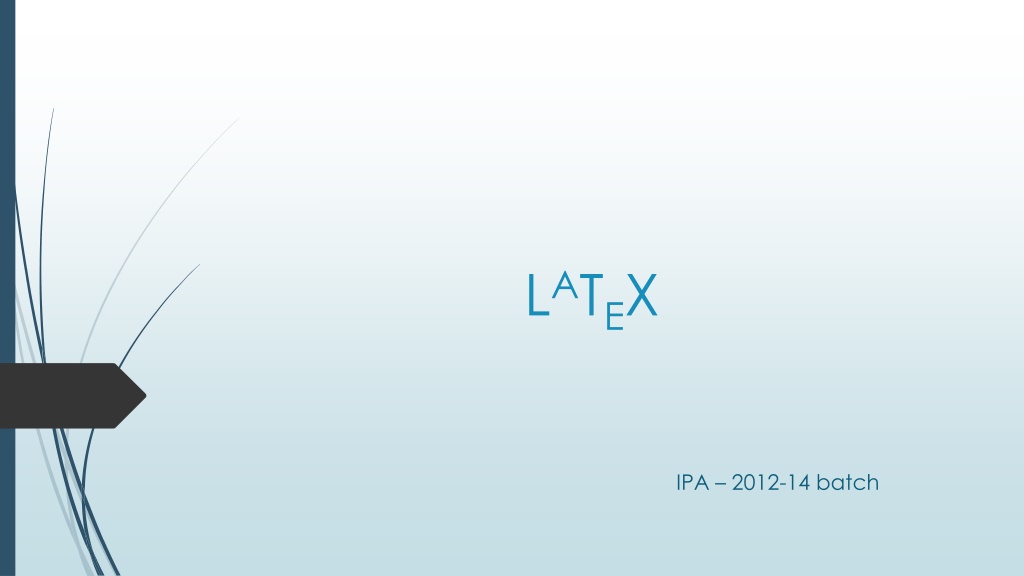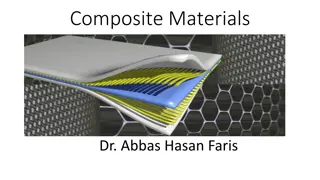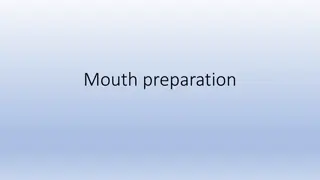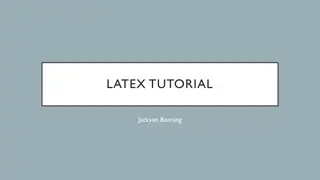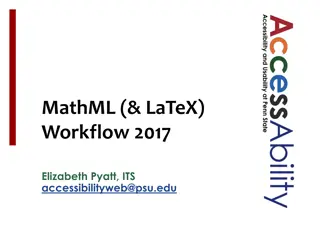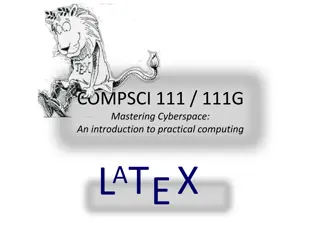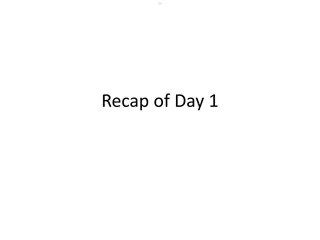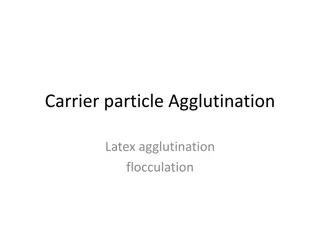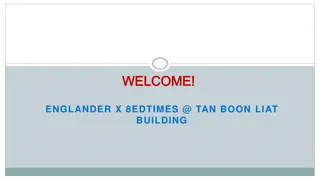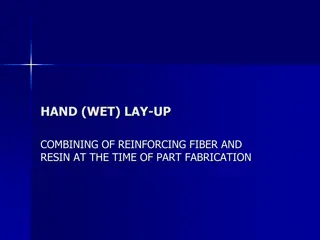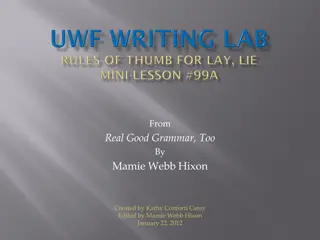LATEX: Document Preparation with LAY-TEK
LATEX, pronounced as lay-tek, is a markup and programming language developed by Donald Knuth for typesetting documents beautifully and consistently. It is a high-quality system with features for technical and scientific documentation including automatic numbering, table of contents, bibliography management, and more. Explore the components of a LATEX document, installation requirements, common error messages, and text formatting options. Enhance your document preparation skills with LATEX.
Download Presentation

Please find below an Image/Link to download the presentation.
The content on the website is provided AS IS for your information and personal use only. It may not be sold, licensed, or shared on other websites without obtaining consent from the author.If you encounter any issues during the download, it is possible that the publisher has removed the file from their server.
You are allowed to download the files provided on this website for personal or commercial use, subject to the condition that they are used lawfully. All files are the property of their respective owners.
The content on the website is provided AS IS for your information and personal use only. It may not be sold, licensed, or shared on other websites without obtaining consent from the author.
E N D
Presentation Transcript
LATEX IPA 2012-14 batch
LATEX A document preparation system - pronounced as lay-tek It is a markup and programming language created by Donald Knuth to typeset documents attractively and consistently. LATEX is a high-quality typesetting system; it includes features designed for the production of technical and scientific documentation. Automatic numbering of chapters, sections, theorems, equations . . . etc. Table of contents, List of figures, List of Tables . . . etc. Facilities for cross-referencing Bibliography Management. Index LATEX is available as free software.
INSTALLATION MikTeX LATEX Editors Texmaker TeXnicCenter Ghostscript - for displaying or printing of document pages, and the conversion between PostScript and PDF files.
Required Components of a LATEX Document Every LATEX document must contain the following three components. 1. \ documentclass { c l a s s} 2. \ begin {document } 3. \end {document} Everything else is optional (even text). \ document class { article } -what kind of document it is to process article report letter beamer IEEEtran
Example \ do cument c l a s s [ 1 2 pt ] { a r t i c l e } \ do cument c l a s s [ 1 2 pt , twocolumn ] { a r t i c l e } This command must appear at the very beginning of your LATEX document, before any other LATEX commands, or you will get an error message. \b e g i n {document } \ end {document } The body of the document, where you include all of your text, must occur between this commands If you have commands for LATEX that will affect the whole document, you should include them in the preamble, which is what the space between the documentclass and begin {document} commands is called. \document c l a s s [ a4paper , 1 1 pt , twocolumn ] { a r t i c l e } \ usepackage {amsmath , g r a p h i c x } \ b e g i n {document } \ end {document}
Error Messages A common error is not to close braces for a command. Another one that occurs frequently is to use math commands outside of math mode
1. Titlepage 2. Acknowledgement 3. Abstract 4. Table of Contents 5. List of Figures 6. List of Tables 7. Chapters 8. Bibliography
Text Formatting Centering Text \ b e g i n { c e n t e r } \ end { c e n t e r } Bold \ t e x t b f { He l l o } Hello Italics \ t e x t i t { He l l o } Hello Underline \ u n d e r l i n e { He l l o} Hello
Font Sizes \ t i n y { He l l o} Hello \s c r i p t s i z e { He l l o} Hello \f o o t n o t e s i z e { He l l o} Hello \sma l l { He l l o} Hello \ n o rma l s i z e { He l l o} Hello \l a r g e {He l l o} Hello
Font Sizes . . . contd. \Large {He l l o} Hello \LARGE {He l l o} Hello \huge {He l l o} Hello \Huge { He l l o} Hello
Bulleted Lists \ b e g i n { i t emi z e} \ i t em {Apple } \ i t em {Mango} \ end {itemize} Apple Mango
Numbered Lists \ b e g i n { enumerate } \i t em {Apple} \ i t em {Mango} \end { enumerate} 1. Apple 2. Mango
Including Graphics in Your Document bmp eps gif jpg pdf ps LATEX works best with the postscript formats (eps, ps) Add graphics Package in the preamble \use package {g r a p h i c x }
Including Graphics Within Your Document \b e g i n { f i g u r e } [ htp ] \b e g i n { c e n t e r } \i n c l u d e g r a p h i c s [ s c a l e =0.3]{ a c c c u r . jp g } \c a p t i o n {Accuracy Curve } \l a b e l {ac } \end { c e n t e r } \end {f i g u r e } Figure 2: Accuracy Curve
LATEX Tables \b e g i n { t a b l e} t a b l e \end {t a b l e}
1 2 3 4 5 6 7 8 9 Table 1: Caption \b e g i n { t a b l e} \b e g i n { t a b u l a r }{ l c r } 1 & 2 & 3 \\ 4 & 5 & 6 \\ 7 & 8 & 9 \\ \end { t a b u l a r } \c a p t i o n {Capt ion} \l a b el { ex } \end { t a b l e}
Example Table 1: Caption \ b e g i n { t a b l e} \ b e g i n {t a b u l a r }{ | l | c | | r |} \ h l i n e 1 & 2 & 3 \\ \h l i n e 4 & 5 & 6 \\ 7 & 8 & 9\\ \h l i n e \end { t a b u l a r ] \c a p t i o n {Capt ion } \l a b e l { ex } \end {t a b l e }
Rows spanning multiple columns \mul t i column { ' numcols ' }{ ' al ignment ' }{ ' c ont ent s ' } numcols - is the number of subsequent columns to merge alignment - l, c or r contents - is simply the actual data you want to be contained within that cell.
\b e g i n { t a b l e} \b e g i n { t a b u l a r } { | l |l |} \h l i n e \mul t i column {2}{| c | } {Team s h e e t }\\ \h l i n e GK & Paul Robinson \\ LB & Lucus Radebe\\ DC & Mi cha e l Duber ry \\ DC & Dominic Matteo \\ RB & Di d i e r Domi \\ MC & David Bat ty\\ \h l i n e \end {t a b u l a r } \end { t a b l e }
LATEX Mathematics Equations a = b\c \b e g i n { e q u a t i o n} a = \f r a c {b}{ c } \l a b e l {t e } \end { e q u a t i o n } a=b\c $$ a = \ f r a c {b}{ c } $$
LATEX Mathematics - Examples \b e g i n { e q u a t i o n} \s q r t {\ f r a c {a }{b}} \ end { e q u a t i o n} \b e g i n{ e q n a r r a y *} \cos 2\ t h e t a & = & \ cos ^2 \ t h e t a - \ s i n ^2 \ t h e t a \\ & = & 2 \ cos ^2 \ t h e t a - 1 . \end { e q n a r r a y *}
\b e g i n { e q u a t i o n} f ( n ) = \ b e g i n { c a s e s } n /2 , & \mbox { i f } n\mbox{ i s even }\\ 3n+1, & \mbox{ i f } n\mbox{ i s odd} \end { c a s e s} \end {e q u a t i o n}
Matrices x Z y v \b e g i n { e q u a t i o n} \b e g i n {ma t r i x } x & y \\ z & v \end {ma t r i x} \end {e q u a t i o n} \b e g i n { e q u a t i o n} \b e g i n {bma t r i x } x & y \\ z & v \end { bma t r i x} \end {e q u a t i o n}
Bibliography BibteX Create a plain text le and save it as .bib extension. Cite the appropriate reference with the tag. Google Scholar is the best and the powerful tool for getting references. \b i b l i o g r a p h y s t y l e { IEEEt ran } \b i b l i o g r a p h y { b i b_f i l e } Compile latex filename.tex (2 times) bibtex filename (2 - 3 times) latex filename.tex (2 times)
Index MakeIndex MakeIndex is a program for making an index in a document generated with LATEX Use the makeidx package in the preamble. Put \ makeindex command in the preamble . Put n p r i n t i n d e x command where you want the i n d e x to appear - usua l l y at the end , r i g h t b e f o r e the \ end {document} command . \ index {} command causes to wrie an index entry . Compile latex filename.tex (2 times) bibtex filename (2 - 3 times) Iatex filename.tex (2 times) makeindex filename (2 - 3 times) latex filename.tex (2 times)
Report IEEE Paper Beamer Resume
References Latex," 2010. [Online]. Available: http://www.latex-project.org/ J. Clark, \Latex tutorial," 2002. Latex: Changing the font size," 2013. [Online]. Available: https://engineering.purdue.edu/ECN/Support/KB/Docs/LaTeXChangingTheFont Latex/tables," 2013. [Online]. Available: http://en.wikibooks.org/wiki/LaTeX/Tables Latex/mathematics," 2013. [Online]. Available: http://en.wikibooks.org/wiki/LaTeX/Mathematics L. Lamport, Makeindex: An index processor for latex. Latex [ppt] , Hari C V, Research scholar NIT CALICUT
